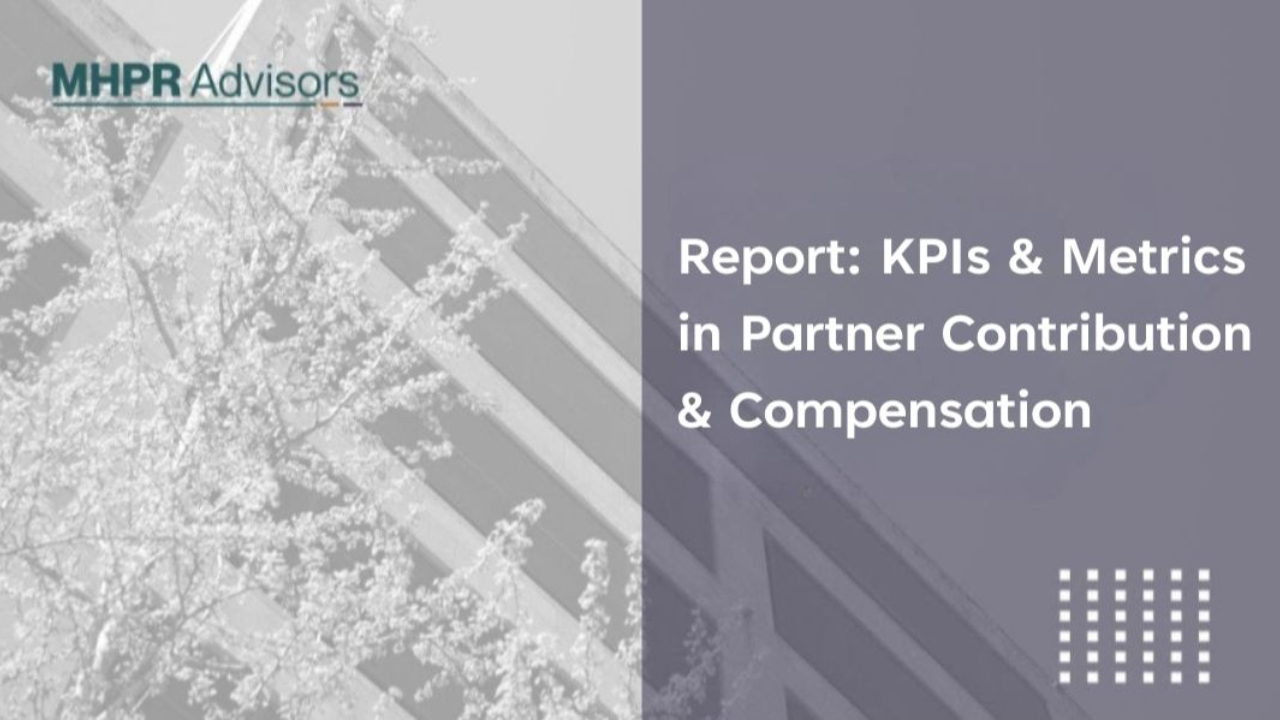
KPIs & Metrics in Partner Contribution & Compensation - Roundtable Report
Author: Michael Roch,Lead author, The Partner Remuneration Handbook (2022)
In partnership with Performance Leader, MHPR Advisors is pleased to share the key findings from the KPIs & Metrics in Partner Contribution & Compensation roundtable.
Finding and using the right key performance indicators (KPIs) and metrics for equity partners is a significant challenge for most firms.
Our recent 2020 Equity Partner Contribution & Compensation Survey showed disconnect between commonly used KPIs and metrics, and the strategic issues facing firms.
Production metrics dominate in firms today, with 75% of the five most important metrics used by firms are production related. The next two most common metrics relate to business development and leadership.
The problem is what’s missing, specifically KPIs and metrics that relate to:
- Long-term financial stability
- Innovation, technology, automation
- Client experience
- Collaboration, alliances, platforms
- People experience
- Diversity and inclusion (D&I)
- Partner and staff well-being
Our roundtable asked, ‘how can a firm tackle these issues while 75% of the KPIs and metrics used for equity partner contribution and compensation management are production-related?
Break out groups identified KPIs for three of these challenges:
- Collaboration
- Innovation/client experience
- Diversity & inclusion
The roundtable also considered common problems in the application of KPIs and metrics, and potential solutions.
We presented the following summary table on this point.

Common problems in the application of KPIs & metrics
KPI & metrics health-check
In helping our roundtable participants to consider their firm’s approach to these issues, we asked them to self-assess the following statements on a five-point strongly disagree to strongly agree scale. We won’t disclose the responses for confidentiality reasons, but we share these questions with you in case you might like to ask them of yourself or your equity partners.
In our firm:
- Partner KPIs align with firm strategy and firm wide KPIs.
- Partner KPIs are balanced across our strategic priorities (not dominated by production KPIs).
- Partner KPIs reflect the role and contribution of the individual partner (not a one-size-fits-all model).
- Partners have a small number of KPIs and related objectives to focus on at any one time(i.e. 3-7 KPIs)
- Partner KPIs flow into an objective setting process that is empowering and motivating for partners.
- Partner KPIs and related objectives are the basis of regular, ongoing conversations between line partners and leaders.
The roundtable offered a framework for developing partner-level KPIs and metrics:
- Choosing firm-wide KPIs that focus on the firm’s strategic and operational priorities. A balanced approach is best to avoid the problem of one area (like production) dominating. Models such as the Balanced Scorecard or Intellectual Capital model can work well.
- Cascading these firm-wide KPIs to group or individual level. Some KPIs cascade easily to partner-level (e.g. production), many do not – and needn’t to, so long as they support firm-wide strategic and operational goals.
- Making sense of KPIs: quantifying KPIs where possible, describing their attributes and giving examples of their application.
- Turning KPIs into individual equity partner objectives or goals. These are concrete actions that can be the focus of ongoing conversation, assessment and accountability.
Our thanks to our roundtable participants for a stimulating conversation.
If you have any questions about the report or would like to discuss how we can help your firm with KPIs and metrics then please get in touch.
This article, co-authored with Ray D'Cruz, also appears on Performance Leader.




